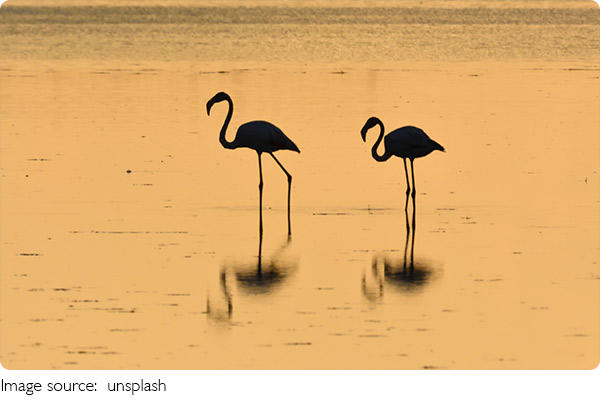Serenade of the Pink

Flamingos are a captivating and rare avian species renowned for their distinct and beautiful appearance.
These elegant birds have long held the spotlight in the natural world, drawing attention with their dramatic plumage and distinctive behavioral habits.
This article aims to delve into the fundamental aspects and various species of flamingos, offering a glimpse into the fascinating world where these vibrant feathered elves thrive.
Basic Introduction to Flamingos
1.1 Appearance and Characteristics:
Flamingos are revered for their unique appearance, characterized by predominantly pink feathers that radiate a brilliant color. This distinctive hue results from natural pigments present in their diet.
Some facts are cool, some are playful, and a few are a bit surprising.
Antelopes, nature's agile elves, showcase elegance in diverse terrains, intertwining with humans to preserve Earth's biodiversity.
The Peregrine Falcon, a globally renowned predator, captivates with its grace and hunting prowess, urging collaborative conservation.
Lions, grassland kings, face human threats. Collective action is vital for their protection and the magic they bring to Earth.
Cats, from ancient Egypt to modern homes, are beloved companions worldwide.
New Zealand's whale migration offers thrilling sounds and historic conservation insights.
Additionally, flamingos typically boast elongated necks and legs, imparting an elegant and upright demeanor as they traverse their surroundings.
1.2 Distribution and Habitat:
Flamingos predominantly inhabit tropical and subtropical regions across Africa, Asia, and the Americas. They prefer lakes, salt flats, swamps, and shallow water areas, which provide abundant food resources and suitable habitats.
Colonies of flamingos often select water's edge locations for nest construction, optimizing their hunting and breeding endeavors.
1.3 Feeding Habits:
Flamingos predominantly feed on plankton, algae, and small invertebrates, employing a unique filter-feeding method. These birds leisurely traverse shallow waters, utilizing their distinctively shaped beaks and specialized tongue structures to filter food particles from the water.
Main Types of Flamingos
2.1 Greater Flamingo:
The Greater Flamingo, the most renowned species, boasts a widespread distribution encompassing Africa, Asia, and Europe.
Towering at heights exceeding 1.5 meters, these flamingos showcase pink feathers and gracefully curved necks, rendering them striking in lakes and salt flats. Their diet primarily consists of crustaceans and mollusks.

2.2 James's Flamingo:
James's Flamingo, a relatively petite species, predominantly inhabits the Andes Mountains of South America and the highlands of Peru. Distinguished by more vibrant plumage featuring a harmonious deep red and pink blend, these flamingos thrive in lakes at higher altitudes, subsisting on plankton and algae.
2.3 Lesser Flamingo:
The Lesser Flamingo, the smallest among its counterparts, primarily inhabits Africa and the Indian subcontinent. Despite their diminutive size, they are the most numerous, estimated at around 2 million.
Unfortunately, they face the threat of endangerment due to declining numbers, loss of breeding grounds, and human activities. Living in groups, they form large flocks and feed primarily on algae and plankton, often foraging in salty lands and shallow lakes.
2.4 Caribbean Flamingo:
The Caribbean Flamingo, a sizable species, predominantly resides on islands in the Caribbean, including the Bahamas, Cuba, and Dominica.
Distinguished by mainly orange-red feathers, slightly deviating from other species, these flamingos inhabit lakes and swamps near beaches, where they feed on mollusks and crustaceans. With a lifespan of up to 40 years, they stand as one of the longest-lived avian species.
Conclusion:
With their unique appearance and remarkable ecological habits, flamingos emerge as one of the most captivating entities in nature. Serving as integral components of wetland ecosystems, they represent the rich biological diversity tapestry.
Reserving flamingos' habitats holds profound significance in maintaining ecological equilibrium and advancing the cause of nature conservation. May we collectively focus on understanding and safeguarding these colorful feathered elves as we strive to protect our shared natural world.

 · Animal Team
· Animal Team